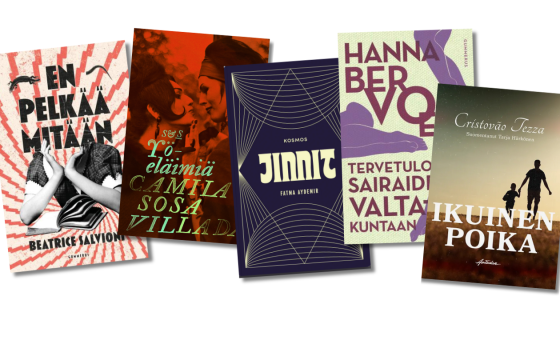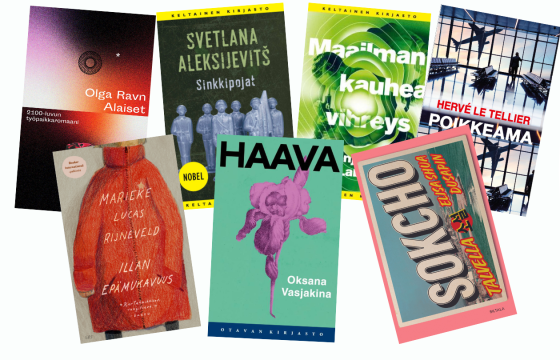
Text: Reeta Holma
Photos: Petri Summanen
In 2022, the Finnish Cultural Foundation launched a new form of support aimed at translating and bringing world literature to Finnish readers, especially from those original languages which are currently underrepresented in Finnish translations.
Over the course of ten years, a total of EUR 1 million will be allocated, enabling the translation of one hundred high-quality contemporary books from around the world into Finnish. The translated works can include prose, poetry, or essays for adult readers.
For the years 2022 and 2023, the supported books' original languages include Spanish, Dutch, Italian, Polish, French, and Estonian. One of the first books released was Olga Ravn's Danish novel De Ansatte – The Employees in English and Alaiset in Finnish – translated by Sanna Manninen.
"As a translator, I am delighted that the Finnish Cultural Foundation has launched such a major project related to translating literature, especially from languages less translated into Finnish," says Manninen.
At university Manninen studied general literature and later translation studies. After graduating she worked for a publishing house before becoming a freelance literary translator. Initially translating from Swedish to Finnish, she soon added Danish and Norwegian, which she learned in practice by reading books.
"Becoming a literary translator is a learning-by-doing process, but various courses and seminars for translators have also been very useful," Manninen notes.
According to Manninen, the best part of being a Finnish translator is the chance to work with books. "Translating fiction into Finnish is also a very creative task, and as a profession, it offers great freedom."
Most often, Manninen translates the books which publishing houses offer her. "In the Nordic countries, Finnish publishing houses have extensive contacts, but in many other language areas, more assistance is needed from translators in selecting books."
Books translated from English dominate the market for translated literature in Finland. According to the Fennica database, in 2022, over half of the fiction translations published in Finland were from English, and just under a fifth were from Swedish. The remaining share comprises all the other languages in the world.
Manninen speculates that English translations are so common because the culture is familiar to Finns. Books translated from English might be easier to approach, therefore more are published. The same applies to Nordic books.
The less a language is known in Finland, the more important it is to translate works from that language into Finnish, she emphasises. Even if you know a foreign language well, entering the world of a literary work is entirely different when reading it in your own native language, interpreted by a skilled translator.
In addition to the Translating world literature into Finnish grants, the Finnish Cultural Foundation annually supports translators with regular grants. Manninen has received several grants from the Finnish Cultural Foundation for translating Nordic literature into Finnish.
The financial significance of a grant is big. "Money means time, and time means quality," describes Manninen. Thanks to a grant there are more opportunities to refine the work, resulting in a better translation. A grant also encourages and motivates professional development.
Author Olga Ravn is known in Denmark especially as a poet. She has stated that she is not particularly interested in traditional forms of the novel. De Ansatte is a fragmentary, poetic text, not a traditional narrative novel. It features, for example, descriptions of strange, inanimate objects that appeal to all of the senses.
It was a fascinating challenge to translate. "It is really difficult to try to describe in Finnish unusual objects that do not exist in the real world."
The work became easier when Manninen learned that the novel was based on texts Ravn wrote for an art exhibition catalogue, describing the exhibited works. Some of the objects described in the book had been on display at the exhibition, and pictures were available. This helped to find the right expressions.
De Ansatte is a critique of capitalism in the form of speculative fiction. It is a kind of existential sci-fi, describes Manninen, adding that the work may not necessarily reveal much about Denmark and the Danes but rather the thinking of one contemporary Danish author.
"That's what translated literature is: it not only tells us what life is like in other countries but also how people think elsewhere."
You can find the books published with our translation grant so far on our book gallery (in Finnish).


